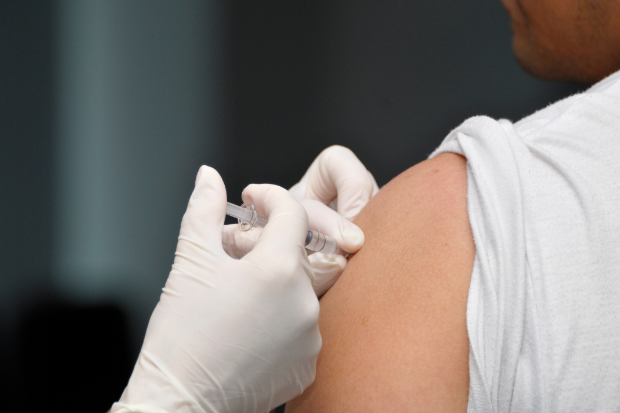Local gov’ts may start COVID-19 vaccination of poor residents using excess supply
MANILA, Philippines — Local governments may now start vaccinating their poor constituents — but only with their excess supply, the Department of Health (DOH) said on Monday.
Health Undersecretary Maria Rosario Vergeire said the vaccination of the poor should not cause a shortage of vaccines for the higher priority groups and reminded local government units (LGUs) that healthcare workers, the elderly, and persons with health risks should remain the priority in vaccination sites.
“The LGUs can [vaccinate the poor] because the guidelines are out. But we have to see how we can be able to manage that without causing a shortage for the other sectors,” Vergeire told reporters. She was referring to the vaccination guidelines for front-line workers (category A4) and the poor (A5) laid out in Department Memorandum No. 2021-0259 dated May 31.
Vergeire said the World Health Organization (WHO) has approved expanding the coverage of vaccines donated through the COVAX global sharing facility to the poor. Previously, COVAX-supplied vaccines were meant to be given only to healthcare workers (A1), the elderly (A2), and persons with medical conditions (A3), the three groups most vulnerable to serious illness and death due to COVID.
The DOH also urged local governments to improve their scheduling systems to prevent crowding in vaccination sites and ramp up contact tracing to shorten the time of case detection and isolation.
Vergeire said experts have estimated that daily COVID cases could be reduced by a third if infected persons were isolated within five days after they tested positive.
The DOH has computed that it took an average six to seven days before a person who has been confirmed COVID-positive to be isolated, putting an untold number of contacts of that person at risk of getting infected.
Confidence
“If we don’t improve from the six to seven days (from detection to isolation), we can’t break the chain of transmission,” she added.
Still, the government remained hopeful that it could hit its target of vaccinating enough Filipinos to achieve population protection this year, National Task Force Against COVID-19 deputy chief implementer Vince Dizon said on Monday.
Speaking during a press briefing of presidential spokesperson Harry Roque, Dizon denied that the country was falling behind its vaccination targets.
“[Since] many vaccines have arrived in the past week, we are confident that the number will increase in the next days and weeks. And with the arrival of more doses this June and July, we see that number to continue increasing. Hopefully, we can reach our target of 500,000 doses administered per day until we reach our target for 2021,” Dizon said.
Roque, citing the latest figures from the National COVID-19 Vaccination Operations Center, said 12.61 million vaccine doses have arrived as of 6 a.m. of June 14. A total of 6.95 million doses were administered.
Earlier, vaccine czar Carlito Galvez Jr. said that 70 million people must be vaccinated by the end of the year for the country to achieve “herd immunity.”
This was lowered to “herd containment” by the third quarter wherein 25 million people would have to be vaccinated. The government later changed its target to “population protection” after the vaccination drive focused on the country’s economic centers — Metro Manila, its six surrounding provinces, Metro Davao, and Metro Cebu—with a target of 60 percent of the combined areas’ population.
